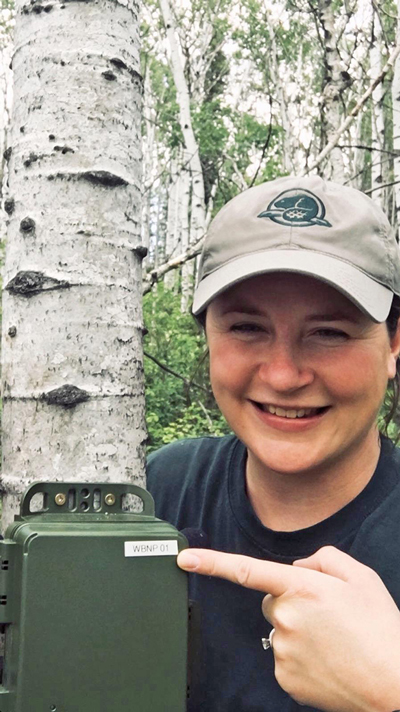
American Redstart, Black-and-white Warbler, Cape May Warbler
Photos: © Nick Saunders
Forest Birds
Wood Buffalo National Park
Why Monitor Forest Birds?
Wood Buffalo National Park’s forests are part of the largest contiguous boreal protected area in the world. The park’s 4.5 million hectares (44,741 km2) provide important boreal habitat for more than 214 species of birds (PDF 1,178 KB), many of which are migratory forest songbirds.
In Wood Buffalo National Park, the main ecological issue for forests is related to the potential effects of climate change. Over time, climate change could potentially impact natural drivers of disturbances within the forest such as fire, disease, and fluctuations in insect populations. This in turn could affect species composition and biodiversity within the forest over time.
Migratory forest songbirds are common and widespread, and also sensitive to ecological changes. Ecological monitoring of migratory songbird populations is a widely-used tool for measuring ecological integrity of forest ecosystems, and can provide direction for future research.

Photo : Parks Canada
Forest Bird Monitoring in Wood Buffalo National Park
In Wood Buffalo National Park, resource conservation staff have started a multi-year program to monitor migratory forest songbird populations over time. Key monitoring questions include:
- Are key forest bird species exhibiting population trends that may lead to a significant decline in abundance?
- Are there changes in species diversity of migratory forest songbirds over time?
- Are there rare, uncommon, or species at risk present, and is there evidence of changes in abundance of these species?
- Which forest habitat types support the greatest abundance and diversity of species? Are there specific habitat types that support species at risk or other bird species?
Methodology
June is survey time! Autonomous recording units (ARUs) are used to detect the presence of various bird species by recording their sounds during the time of year when they are most active in defending their territories and attracting mates by singing. The ARUs are attached to trees in various locations throughout the park, in different types of forest habitats.
Since most bird species tend to be most active early in the morning, the units are pre-programmed to record for 10 minutes during a four hour window which starts 30 minutes before sunrise. Some of the ARUs will also record for 5 minutes around sunset to capture songs from species such as thrushes which tend to be more active late in the evening. The recordings are sent to the Alberta Biodiversity Monitoring Institute (ABMI) for analysis of the songs by species. Park biologists are then able to analyze the data statistically to monitor population trends.
For more information:
Lori Parker
Ecologist Team Leader
Wood Buffalo National Park
Ph. 867-872-7932
E-mail: lori.parker@pc.gc.caca
- Date modified :